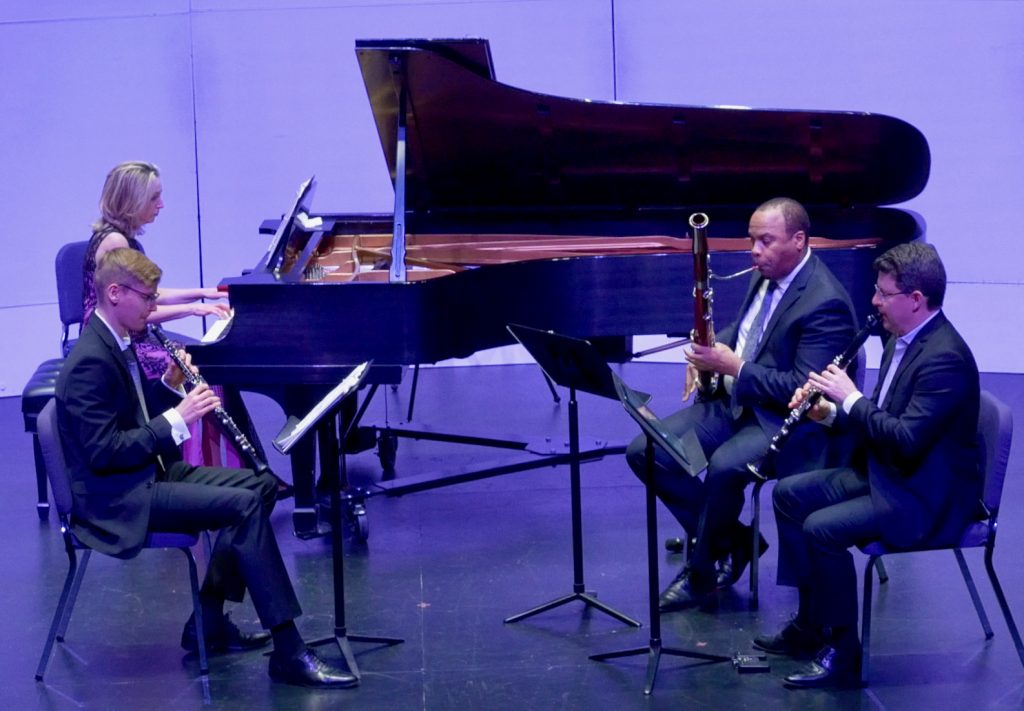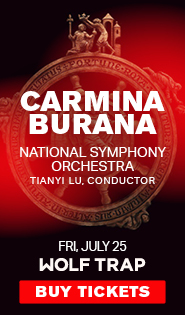Poulenc Trio confronts their namesake’s image at Candlelight Concert Society

Music’s sheer elusiveness may inspire composer stereotype shorthand: Beethoven, the irascible genius; Liszt, the Barnum-esque virtuoso; Ravel, the fastidious craftsman. Francis Poulenc has long had his own version: the droll flâneur with one foot in the cabaret and one in the church, the unabashed melodist whose musical charm was either an implicit or explicit exception to the dodecaphonic avant-garde of his era. That is one way to approach the Poulenc Trio’s concert at Columbia’s Horowitz Center, presented Saturday night by the Candlelight Concert Society.
Fair warning: I have a Poulenc soapbox, and I am about to climb up onto it. But there is plenty of charming music that has not maintained the foothold in the repertoire that Poulenc’s has. And that is because Poulenc’s music radically speaks to the modern condition in a way that the stereotype soft-pedals. And, even though Poulenc was only part of the program—and while there was much about the concert to admire—there seemed to be traces of the disconnect between the stereotype and the music throughout the evening.
The opener was the group’s namesake: Poulenc’s 1926 Trio. Not surprisingly, the players—founding members Irina Kaplan Lande on piano and Bryan Young on bassoon, along with oboist Alexander Vvedenskiy, who joined the Trio in 2018—were in their element. (They were also in the office: Lande is Candlelight Concert Society’s artistic director, and Young its vice-president.) They coursed through the music like skiers navigating a particularly familiar piste. Every turn was taken with brisk confidence, the emphasis on the music’s sparkling surface.
The program then pivoted from early to late Poulenc: the 1962 Clarinet Sonata, with Lande joined by guest artist Alexander Fiterstein. Young introduced the piece by invoking Poulenc’s “consistency” of language across his career, but the Sonata made apparent that what remained consistent was not only melodic and harmonic tics, but what the performance of the Trio had kept under the hood: how much Poulenc’s rhetoric was predicated on aphorism and discontinuity. The opening of the Sonata, a clutch of fragments that only later coalesces into longer phrases, has a shard-like quality that is not so far from post-Webern serialism. And the drama of the piece—well-realized in Fiterstein’s eloquent, limpid playing—is how even the most cheery music is never far away from its emotional antipode.
That jumble of traits contributes to the saint-and-sinner dichotomy of the popular Poulenc. But it goes deeper; it’s the engine and the goal of the music’s strategy. Poulenc didn’t so much write melodies as motives that semiotically read as “melodic,” a fine-line distinction that nonetheless enables his quicksilver, non sequitur sense of construction. The Sonata also exemplifies the point of Poulenc’s constant self-quotation, of patterns, chords, ideas. Much of the Sonata reiterates figures that featured prominently in the Gloria, for instance, but, in the Gloria, they were echoing La Voix Humaine, and so on. It is as if Poulenc wanted to catalog every possibility, to try out a motive in a variety of contexts and collocations and see how it does and doesn’t change. It echoes the Impressionists—think of Monet’s studies of haystacks, or Debussy’s survey of the sea at various hours throughout the day—but with that encyclopedic bent filtered through the Surrealist fascination with montage and juxtaposition. No wonder Poulenc’s music endures: its breeziness masks a search for a fixed point in the persistently shifting world of alienation and existential melancholy.
The rest of the program hinted at connections with these qualities; sometimes the dots connected, and sometimes they didn’t. A new piece, Viet Cuong’s 2019 Explain Yourself!, commissioned for the Trio and Fiterstein by the Barlow Endowment, embraced the humorous part of the Poulenc image with both arms: a theme (derived from a quotation from Poulenc’s Aubade) undergoes slapstick travails at the hands of the oboe, squawking out multiphonics, while the piano, with increasing insistence, tries to keep the proceedings on track. It channeled Poulenc’s flair for instant affect into a meta-stylistic exercise, Cuong spraying graffiti on neoclassicism the way the neoclassicists tagged 18th- and 19th-century forms and repertoire. It plays like a sketch, but an effective one, the single joke renewed with increasing, Pythonesque insistence.
The finale of Andre Previn’s 1994 Trio was programmed, Young said, as a memorial epitome to the composer. Lande, Vvedenskiy, and Young gave the music appropriate sparkle and dash, and the music, veering between overt jazziness and open-prairie Americana, made a case for Previn as a cheerful omnivore in the customary Poulenc mold (the movement’s tempo indication is “Jaunty”). One suspects that the full trio might have made a stronger pairing with the deeper elements of Poulenc’s style. Previn, too, was a collector and curator of musical signals with a structurally cinematic sensibility.
The concert so far had been a largely glossy affair, in terms of approach and interpretation. But in the final two pieces on the program—which, on paper, might have archaeologized the serious and sardonic boundaries of Poulenc’s operatic streak—the approach turned limiting. In Mikhail Glinka’s youthful Trio Pathétique, Lande’s fleet, cut-glass, across-the-keys playing—effective in the other repertoire—here seemed decidedly underpowered. Without a robust foundation, Fiterstein and Young’s elegantly shaped bel canto lines didn’t have space to soar and yearn. And the final showpiece, a glittery oboe-bassoon-piano “Fantasia concertante” on themes from Rossini’s L’Italiana in Algieri by Charles Trébert and Eugene Jancourt, could have used more oomph, more indulgence.
In fact, the encore—Astor Piazzolla’s “Chau Paris”—more effectively brought it all together. The piece seems to slip around the edges of Piazzolla’s usual song-and-tango—a brand as strong as Poulenc’s—directly into the volatile, rhapsodic mood that underpins his more familiar style. And the quartet rose to the occasion, Lande unleashing more dimension and power, the three winds spinning big shapes and phrases. In the best music, the surfaces are made to be broken.
The Schumann Quartett plays string quartets by Mozart, Shostakovich, and Smetana 7:30 p.m. February 22. candlelightconcerts.org

